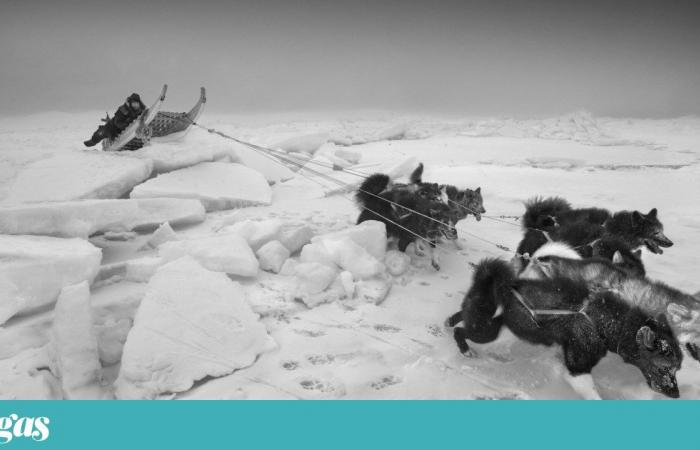“The Big Ice is sick.” Every day, Ragnar Axelsson passed that man when he went to join a group of hunters of narwhals and polar bears in Thule (Qaanaaq), in Greenland. Every day the old man would look up at the sky, sniff the air, stare at the Ingelfieldfjord sea ice shelf and speak to him in a language he did not understand. On the fifth day, he found someone to translate it. “Something is wrong. It shouldn’t be like this. The Big Ice is sick.” Ole told him “of Greenland, glaciers and climate change”. It was 1987. “It was the turning point. The moment I realized that all this was going to disappear and that I had to document it”, he recalls to Fugas.
Until then, Ragnar “just wanted to photograph the life of hunters” in the Arctic. He wanted to “take a good picture”. That was the point. “He had read about the old Arctic heroes who had gone to the North Pole and found it all fascinating.” From that meeting, however, “documenting a life in change”, that of those communities in the countries at the top of the globe, intrinsically interconnected to the climate and also irremediably altered by it, became a life project. “I discovered that what I had to do was give them a voice.”
Over the past 40 years, the Icelandic photojournalist has returned numerous times to different Arctic countries. The day before the interview with Fugas, days before closing the cycle of lectures at another Exodus Aveiro Fest, which runs from Friday to Sunday, Ragnar had been flying over and photographing the glaciers. It’s something he does regularly. “In one, two, three, four years you see many differences. There are huge changes in glaciers, so there can be a rupture at any time. I want to take before and after pictures. We don’t know when it will happen, but I think it will be soon ”, he says, noting that, in some cases, “they are receding about 100 meters a year ”. He puts two images side by side in the conversation, captured at the same time of year: “The field was completely frozen in 1985 and in 2015 it was water, you had to go see it by boat.”
Ragnar Axelsson
In the book glaciers, published in 2018, Ragnar therefore wanted to photograph “an ode, a poem to all glaciers”, their fissures, their holes, the textures that snow, ice and rock draw on the arid landscape as if they were the skin of a an animal that, today, we know wounded. “All this will disappear in 150 or 200 years. Scientists say that, with what has already happened in the atmosphere, they will melt”, he predicts. “It’s like a boat sailing. We stop the engine and it continues to sail for many miles.”


